Earlier this week we explored the newly restored interior of The Mount, Edith Wharton's Berkshires home. Now it's time to explore the grounds! Wharton completed a European grand tour and subsequently penned a book called
Italian Villas and Their Gardens that was published in 1904. She designed the formal gardens at The Mount herself to create a transitional space between the house and the property's woodlands, meadows and lake. Her niece, the renowned landscape architect Beatrix Farrand, was also involved in the design of the grounds. Here's a look.
More: Take a tour inside the house
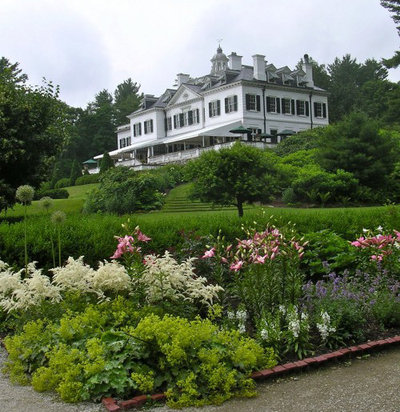
In Italian Villas and Their Gardens, Wharton observes "The Italian country house ... was almost always built on a hillside, and one day the architect looked forth from the terrace of his villa, and saw that, in his survey of the garden, the enclosing landscape was naturally included: the two formed a part of the same composition."
In keeping with her ideas about the siting of Italian country villas and their relationship to their gardens, Wharton placed the house on a rock outcropping to take in the views of the gardens, and beyond to Laurel Lake.
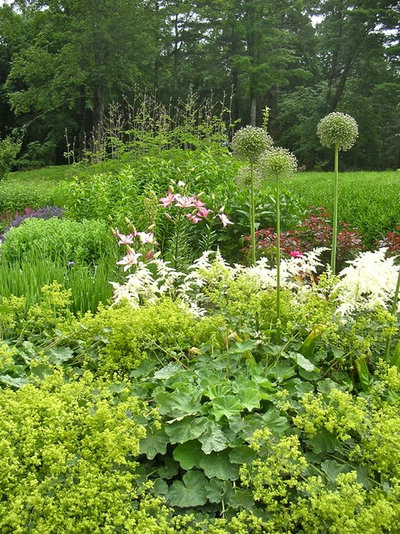
Allium, ladies mantle and astilbe are just a few of the perennials that create the undulating lines within the borders of the flower garden. We'll get over there in a moment.
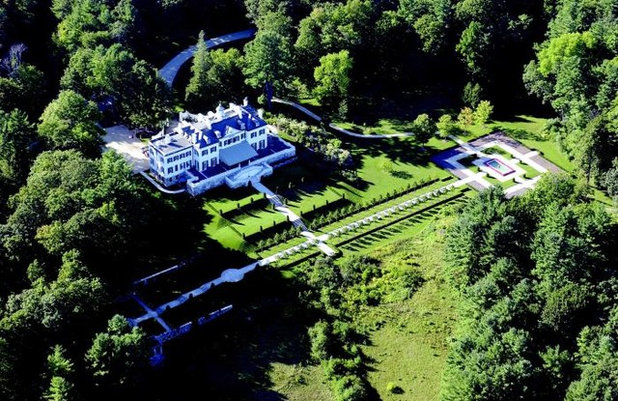
This shows the formal axial plan of the house and gardens. The relationship between the landscape and the house was always a priority for Wharton as she designed the home.
The formal garden on the right is the flower garden, which Wharton viewed from her bedroom window. The formal garden on the left is a sunken secret garden.
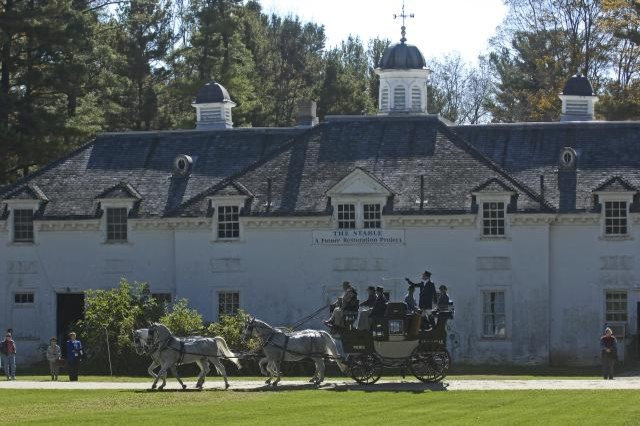
The stables, seen from the main road. The approach to the house was designed by Wharton's niece, Beatrix Jones Farrand, who went on to become one of the most prominent landscape architects in America.
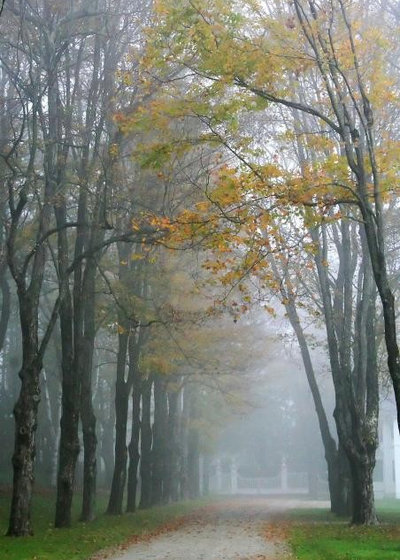
Farrand designed the entrance sequence in three parts. The first part is an 800-foot long straight allee of sugar maples. It passed an extensive kitchen garden she designed adjacent to the gatehouse (seen through the fog in this picture) which no longer exists. It also passed a greenhouse and the stables. Beyond those outbuildings it leads through the woods.
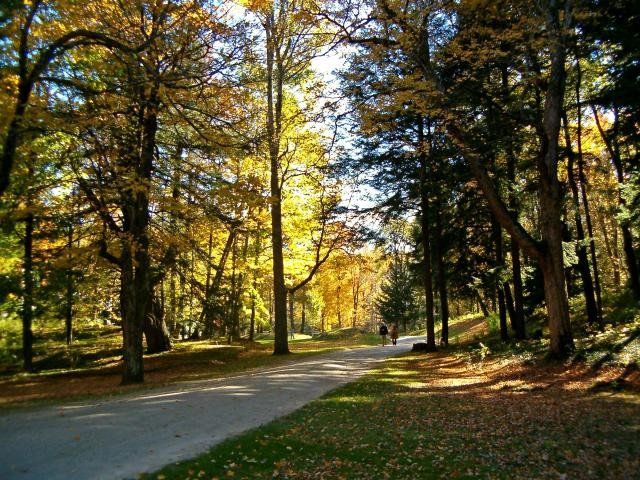
Next the road curves through beautifully designed woodlands, passing twice over a picturesque stream and small mounded hills.

Wharton planted ferns and periwinkle extensively alongside the second part of the entry approach road.
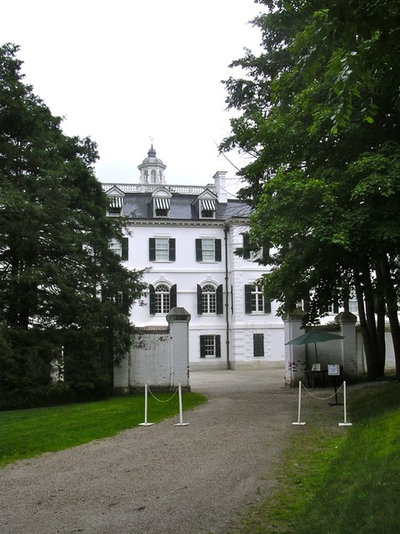
Winding around part three of the design, a last curve leads visitors to a walled forecourt and the entry to the house.

From inside the forecourt, an opening also leads to an alternative house entry, a curved path. I was drawn as if by a magnet to this option when I visited (rather than entering the house right there), even though it was raining.
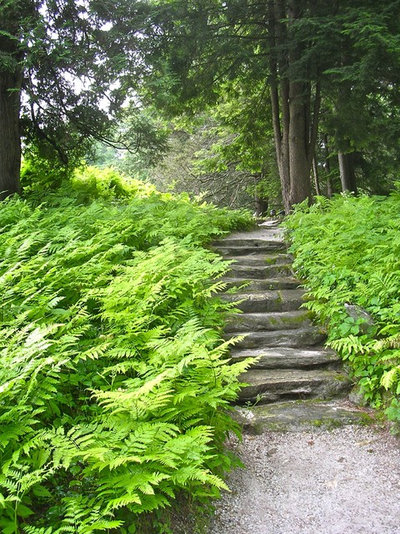
This path leads over the hillside and around the left side of the house ...
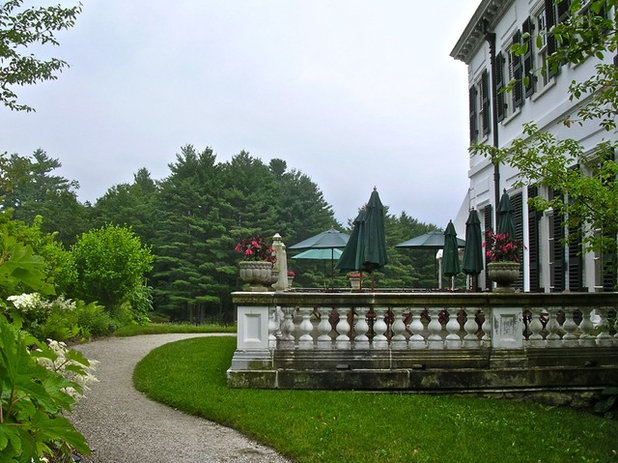
... to the veranda.
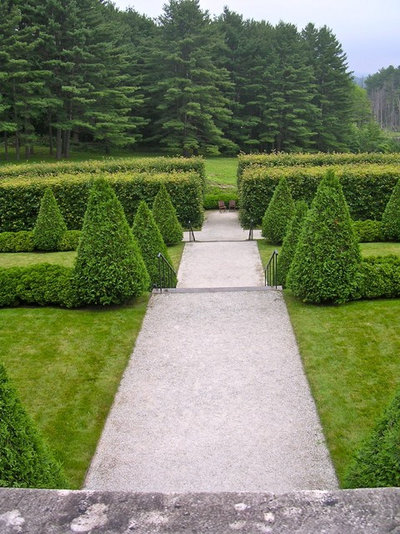
Grassed terraces lead down from the center of the veranda to a long cross-axis, which is lined with linden trees and leads to formal gardens at either end.
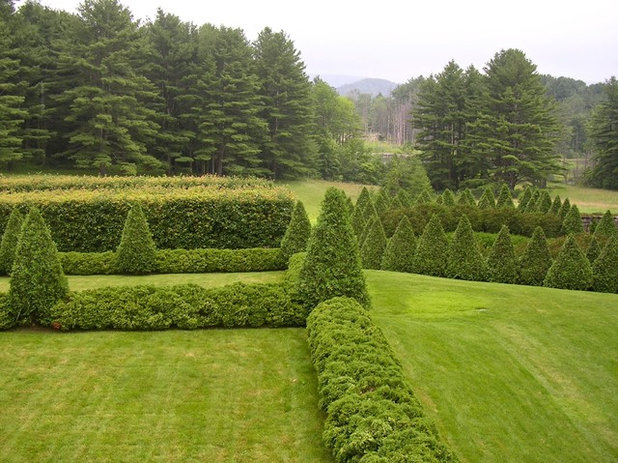
The edge of each terrace is punctuated by hemlock hedges and clipped arbor vitae.
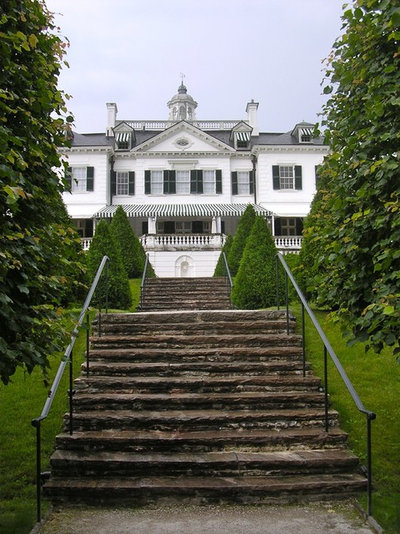
A view looking back up the axis to the house. Wharton knew that Italian gardens were "a prolongation of the house." This designed landscape navigates a formal transitional space between the house and the wilderness beyond.
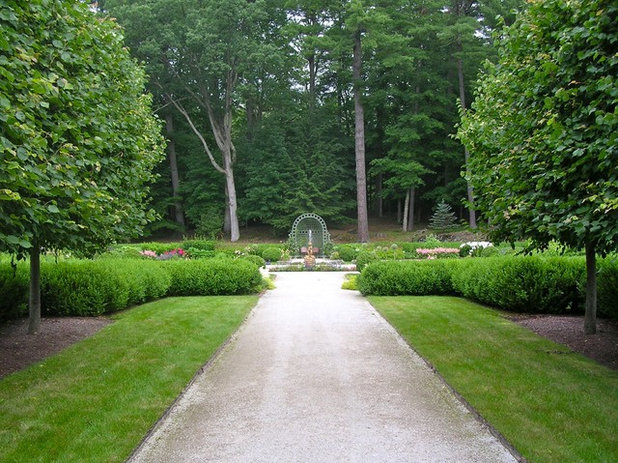
Here's a view down the linden walk to the flower garden. A trellised niche marks the visual end of this axis, providing a backdrop for Wharton's dolphin fountain centered just before it.
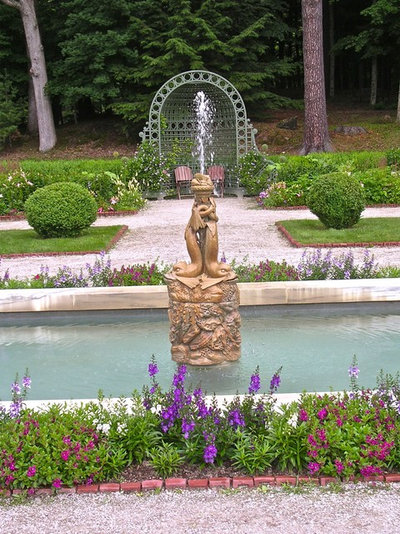
Here is a closer look at the fountain. This garden is more French-inspired than Italian. Italian gardens were less about flowers and more about shapes and materials like stone, sculptural trees — both clipped and natural — and ornaments like statues.
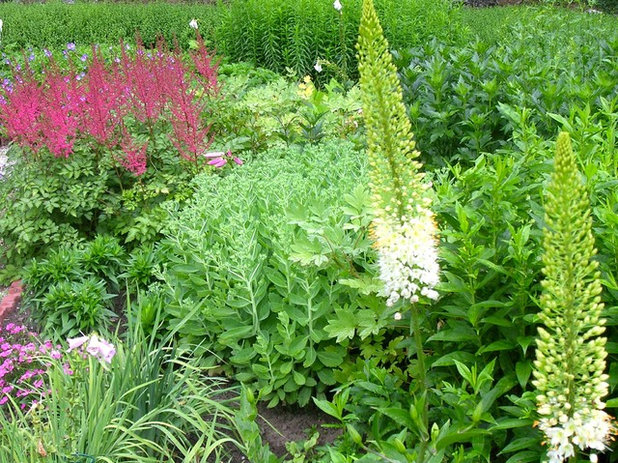
Based upon Wharton's intents, more than 3,000 annuals and perennials have been planted in the flower garden as part of the extensive restoration of the property.
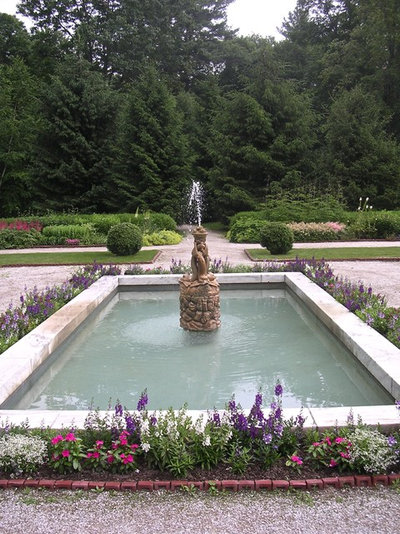
Beyond the fountain, a path that leads into the evergreens and on to the rest of the less formal grounds. This is a good example of the formal gardens prolonging the house and creating a transitional space into less tamed parts of the property.
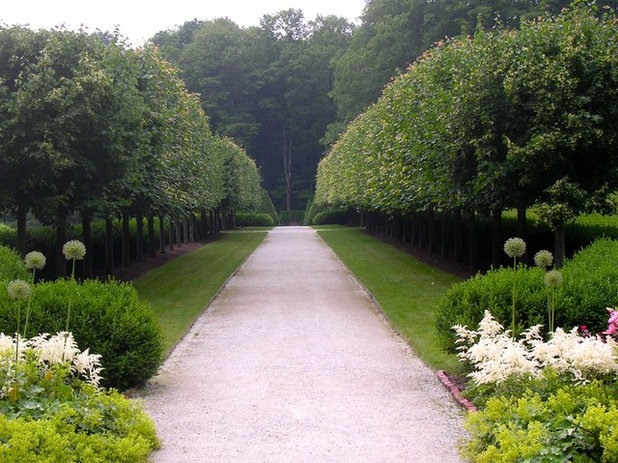
Exiting the flower garden and looking back down the 300-foot-long linden-lined walk, one gets a hint of the sunken walled garden at the other end.
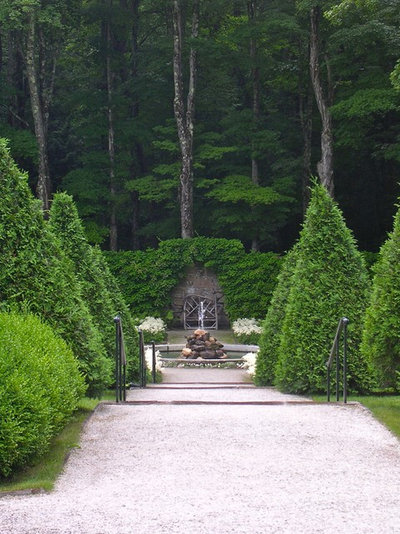
Again, the slope is navigated by a series of terraces down to a secret garden.
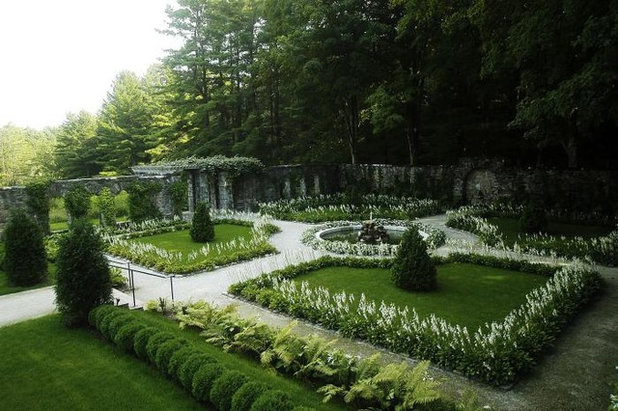
The secret garden is carved out of the woods on two sides and has a more rustic look, from the limited plant palette (mostly green and white, featuring astilbe prominently) to the rustic rock fountain. Beyond is a view through a meadow to a pond.
In spite of its formal arrangement, the plantings and other materials in this garden make it an appropriate transitional space out into the less manicured areas of the estate.
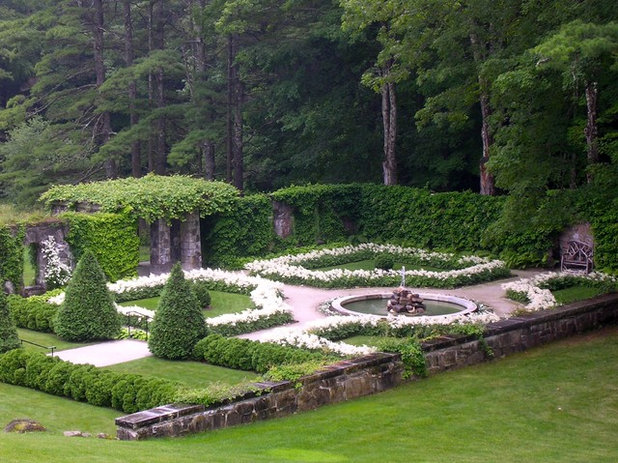
The secret garden is 80' x 80' square and very pleasing in proportion and scale. The area stands up to the vast grassed terraces, and the 10-foot walls stand up to the heights of the majestic trees beyond the garden.
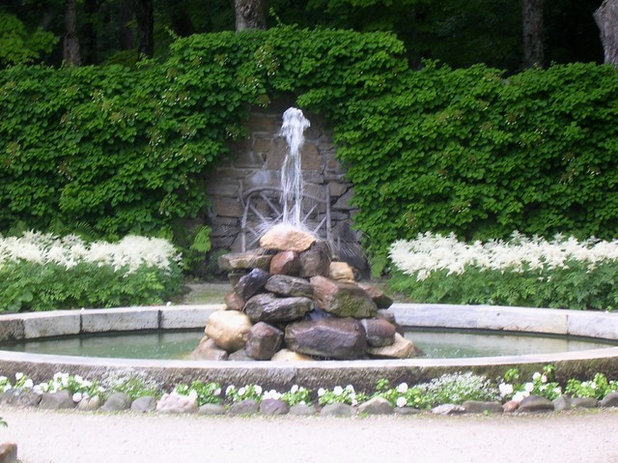
Restoring and recreating this garden was quite a feat, as it was completely overgrown. The rock fountain is the focal point and makes reference to natural materials found on the site.
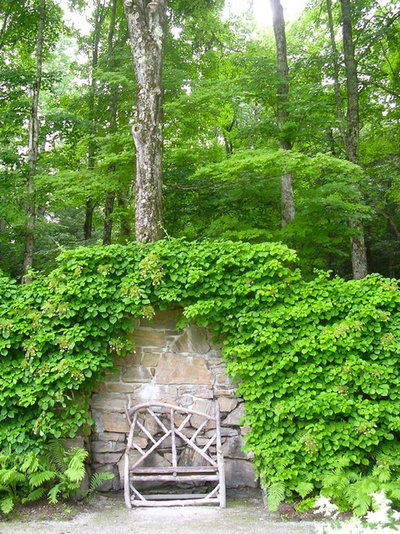
Elements like this twig bench also give the garden rustic touches and reflects the more low-key atmosphere of summer cottages in the Berkshires. In fact, the design of The Mount is an excellent example of a transitional period in design between the over-the-top ornamentation of The Gilded Age seen in Newport, Rhode Island, and the back-to-nature "roughing it" attitude that followed with Great Camps in the Adirondacks.
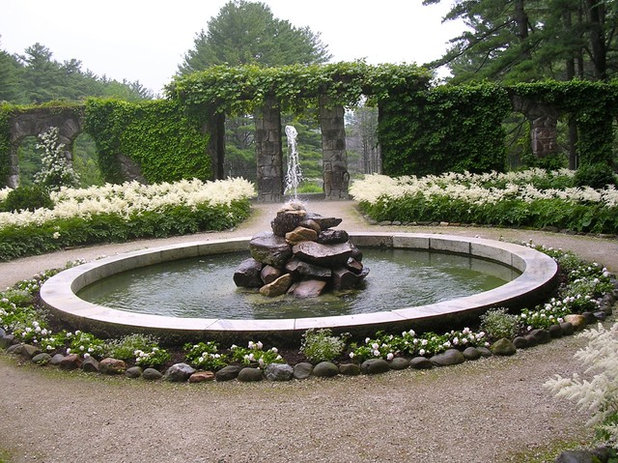
This wall around the secret garden controls views to the wilderness beyond.
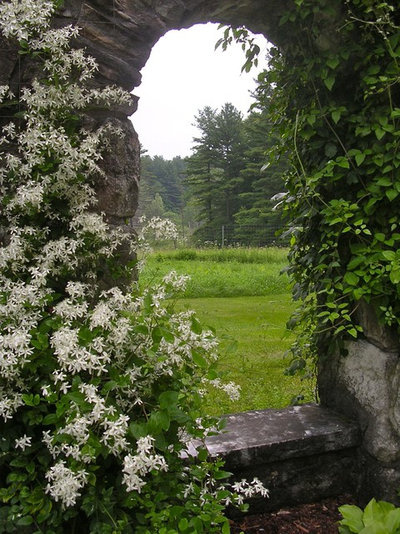
A view through this archway reveals a meadow and Laurel Lake.
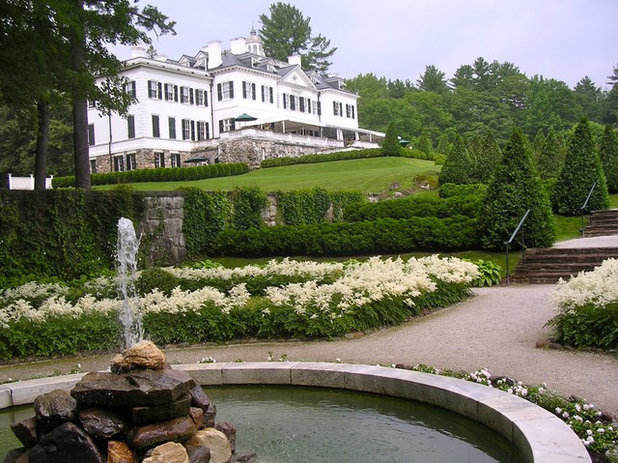
This image shows how well-sited the house is atop the rock outcropping.
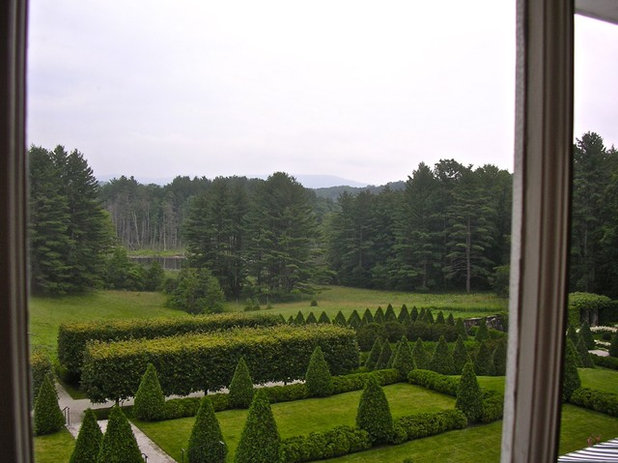
A view from the third floor of The Mount. It shows the formal gardens which are an extension of the house, and the lake beyond.
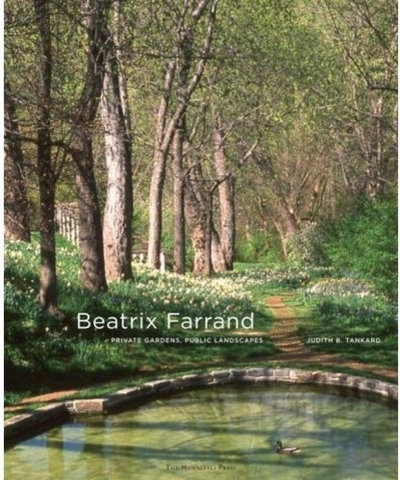
Amazon
Beatrix Farrand: Private Gardens, Public Landscapes - $37.80
Beatrix Farrand, like her aunt, lived a fascinating life, breaking free from the usual Brahmin expectations. Starting her career with her aunt and her connections, she went on to design Dumbarton Oaks, grounds at Yale University, and many other important projects. She is one of the premiere landscape architects in American history, and was the only female founder of The American Society of Landscape Architects.

Amazon
Italian Villas and Their Gardens: The Original 1904 Edition by Edith Wharton - $23.10
This is a very pretty edition of Wharton's book, Italian Villas and Their Gardens. My copy is paperback, but interestingly enough, it has a sketch of an Italian garden on the front that looks like it could have inspired the secret garden at The Mount.
Would you like to see a particular historic property explored on Houzz? If so, please let us know in the comments section.
Support the restoration and maintenance of The Mount
Take a tour inside The Mount





